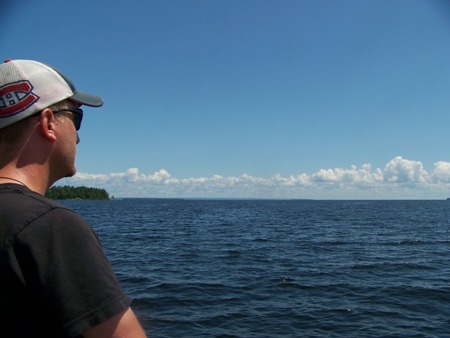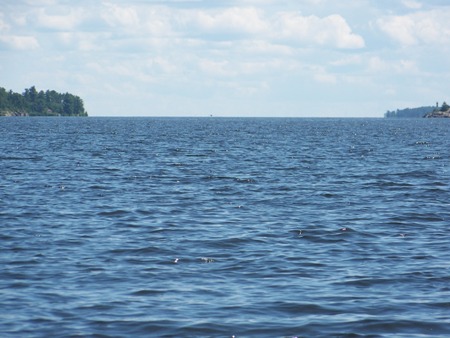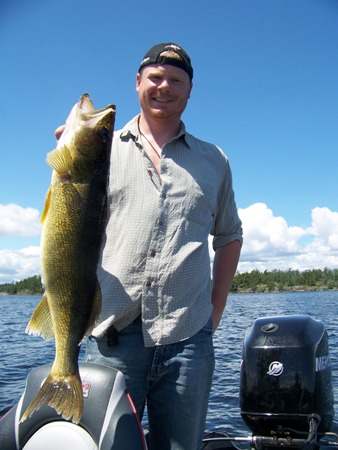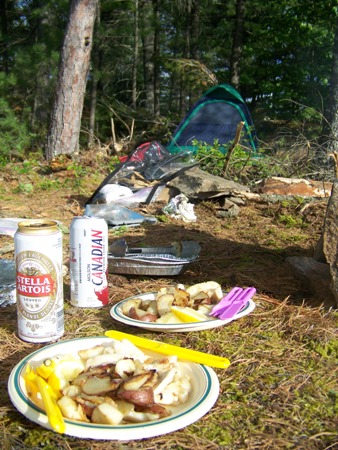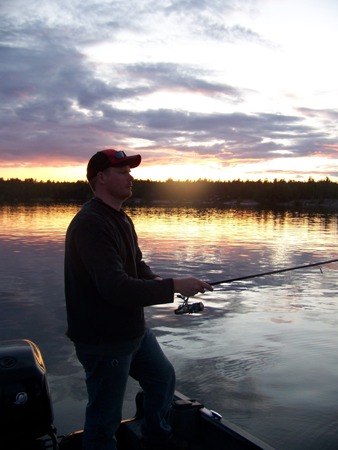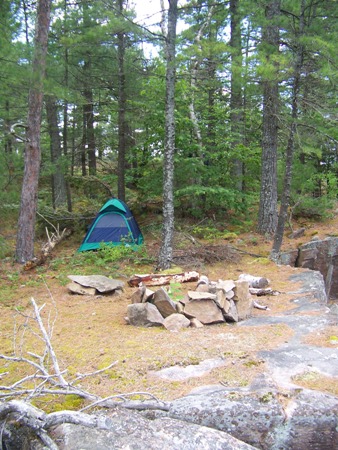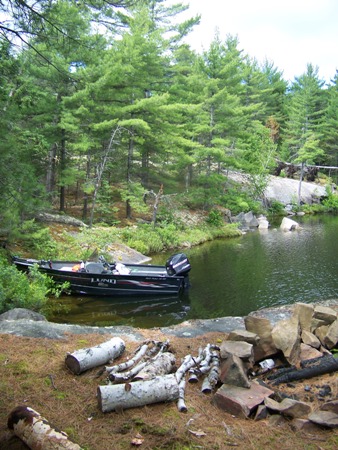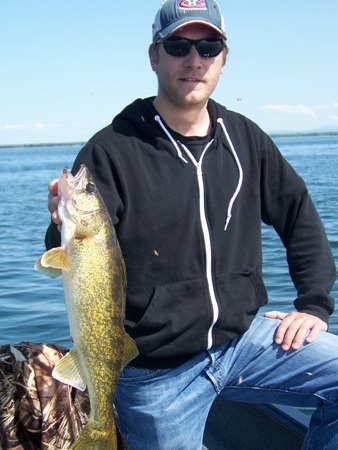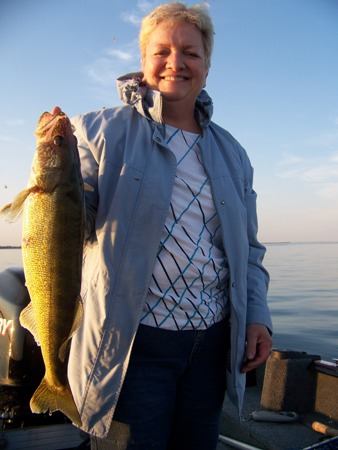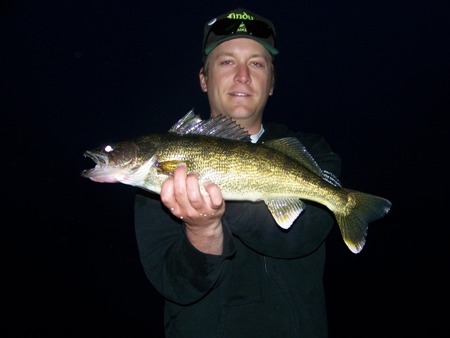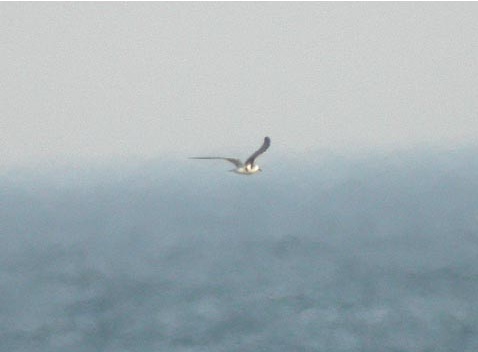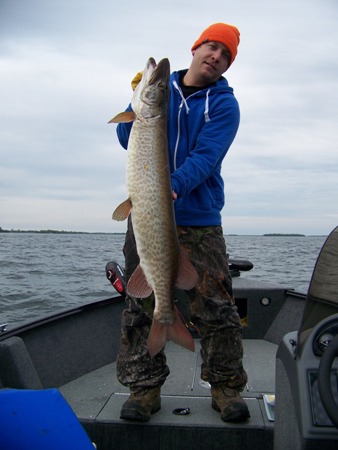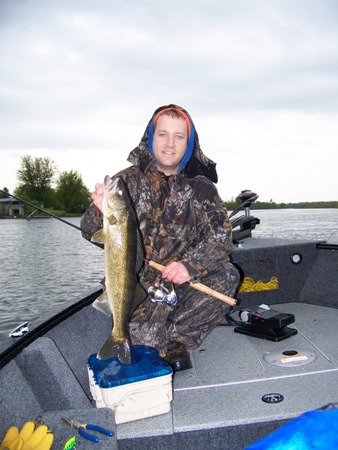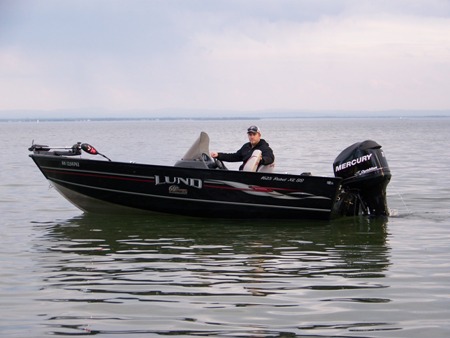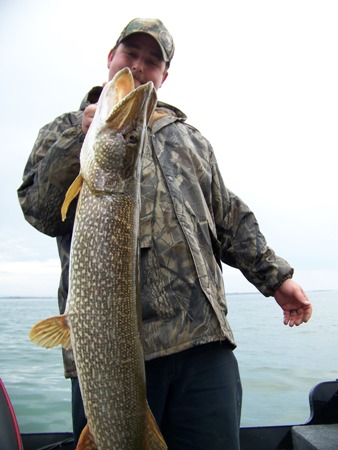N.B – There is now a link to the Fan Photos page on the right hand side of this blog under “links”. Check it out I’ll keep it updated as you send me pics. Dominic, the email address you left when leaving comments did not seem to work. I tried to PM you my email address but could not get through.
Ever since I’ve been a young child I knew there was something about lakes and rivers that fascinated me. To this day, I feel a spiritual connection to lakes. They are historic natural monuments of lore and legend that come in all shapes and sizes and gateways to the early explorers. They hide countless stories of exploration, survival and human endeavor, some known, others shrouded in mystery and others still untold. They can be dead calm one day and able to unleash a fury capable of capsizing the largest of vessel the next. Whether I am imagining myself paddling the waters of the St-Lawrence for the first time or what Lake Nipissing would have looked like 300 years ago, I seem to be magnetically attracted to these bodies of water. Campfire stories of giant muskies, huge sturgeon, trophy walleye and bass only further stimulate my imagination and attract me to the water. Fishing Lake Nipissing has been a dream of mine ever since I first saw the lake 6 years ago while driving to Winnipeg. Seeing as I have a new boat this summer I decided to take a trip up there to make my dream a reality.
Lake Nipissing, which means “Big Water” in Algonquin language, is truly impressive. It is the 5th largest lake in the province of Ontario with a surface area of over 873 square kilometers. Other than near the mouth of the French River the lake is surprisingly shallow with an average depth of only 15 feet or so*. The French River, separated in “upper” and “lower” sections by the Chaudière dam in Dokis drains the waters of Nipissing into Georgian Bay, a journey of 110kms. The entire upper portion of the French is a Provincial Park, meaning that the area has maintained its natural beauty. The river was designated a Canadian Heritage River in 1986*. Only a handful of small cottages can be found on the shores but for the most part it is left completely untouched. The Upper French River basin leading into Lake Nipissing is a breathtaking and absolutely spectacular array of mossy ice-carved Canadian Shield rock, countless islands, steep-walled gorges, rapids, areas of broad open water, large pine and birch trees and fish and wildlife. (*Source – Wikipedia)
The locals I spoke with all warned me about the lake’s fury and suggested I listen to weather reports before wandering out too far. When looking west towards the lake from North Bay one can easily see why the warnings were founded. Nipissing’s size is quite impressive and the shallow water creates larger and more irregular waves (according to locals). This is particularly true if you are in the East end of the lake during a strong Westerly wind. I would not want to get caught out there on a very windy day or during a strong thunderstorm. Lucky for my friend Andrew and me, Mother Nature provided us with two spectacular days just as our trip was set to come to an end. This summer seems set to break records for all-time low temperatures so we eagerly took full advantage of those two days.
My adventure started west of Algonquin Park in Huntsville, where my friend Andrew was spending time at his family cottage on Oxtongue lake. I spent a night there and fished that lake a little but the lake trout there are hard to catch at best and there are no walleye in that particular lake. We did catch a few bass but for the most part we spent time relaxing and enjoying the scenery. From there we made our way up to North-Bay on a cold and wet morning where we were graciously offered a meal and a place to spend a night by Marcel, an old friend of Andrew’s. I was worried about my Optimax because I was running at 6000 RPM at 25mph and I usually always keep the RMP at about 5600 at 35-40mph. Something must have been thrown off during the 6hr trip up through Algonquin Park because my fuel gauge also stopped working. The engine didn’t sound like it was over revving but I figured it was in my best interest to have it looked at. We tried a place in Huntsville that dealt with Mercs but unfortunately they weren’t very interested in helping us out there. Fortunately someone at a coffee shop in North-Bay directed us to Power Sports & Marine located on Main Street. The guys there immediately ran a diagnosis on the engine (I.E plugged it into a computer) thankfully revealing nothing was wrong with the motor itself and that the tachometer and fuel gauge were broken. I also decided to install a transom saver while I was there as the motor bounced around quite a bit on the highway without it. The positive diagnosis was obviously a relief and the fuel gauge was fixed. I can’t thank Maurice and the rest of the crew over there enough for stopping what they were doing and taking me in without notice like that. If you’re ever in the area and need service look them up they are great.
Back to the trip. We didn’t wet the boat in North-Bay seeing as the wind was pretty nasty and the weather wasn’t exactly warm or particularly dry. We decided to spend the evening indoors at Marcel’s sipping scotch and relaxing instead. The next morning we headed north to Sturgeon Falls and eventually made our way to the Cache Bay area. I didn’t like the looks of the bay on the chart plotter as it is littered with very shallow rocky shoals and there are no deep water spots whatsoever that I could find nearby. I’m a strong believer in the fact that deep water is a good starting point to find fish holding structure when the water reaches 70F so this area had me at a loss. Couple that with the fact that the entire west arm seemed to be filled with cabbage weed patches and you end up with a difficult situation to find fish in. I didn’t really know where to start in what seemed to be a vast and featureless bay of water 12 feet deep or shallower. I knew this wasn’t where the majority of the lake’s fish were holding immediately. Despite this set-back we tried to cast for pike, tried jigs, pull spinners and live bait over weed patches, some topwater baits for bass and nothing. A storm eventually moved in and we headed back in empty-handed, stopping in at a local tavern for a pint hoping to meet some local fishermen. We met up with a gentleman there who fished the lake for the last 40 years. He seemed discouraged about the lack of fish in the western area of the lake but suggested we try the French River. I had already marked a few spots near the mouth of the French on the chart plotter earlier and his suggestion only drove home the point that I wanted to get there. We could have made the boat ride over that day but with thunderstorms lurking in the area it was best to leave first thing in the morning and to get there by road. As soon as first light broke, we were off to the Ojibwa community of Dokis First Nations.
Once in Dokis we found a place to buy camping permits for the French River Provincial Park and a small marina which became home base. The camping fee is 9.50$ per person, per night and you need to camp in a designated campsite. We loaded the boat with tents, sleeping bags, food and everything else needed to set up camp and followed the map about 15 miles upstream until we found a small isolated bay with designated camp sites. This spot was spectacular. It was also one of the few places that allowed me to park the boat against the shore as most other sites were rocky and did not allow for me to dock the Lund. The boat ride to camp was a scenic, windy adventure through a maze of rocky islands. The neat thing about it was the sense of total isolation the bay provided. We were absolutely alone out there other than a few people staying in a cottage about a mile away. The place is a maze of islands and waterways. Be careful though, there are many sunken islands, shoals and rock piles hidden in the tea-coloured waters that could ruin your trip in a hurry. The chart plotter was vital in allowing us to quickly find safe paths through this very uneven and unpredictable terrain.
The fishing here was excellent. Walleyes were found on every piece of structure I had marked the night before on the chart plotter and we also found fish in other places such as saddle areas between islands and long rocky points with access to deep water. The largest fish came out of the main river channel on rock piles. The magic depth seemed to be about 20 feet and the best spots had very deep water nearby and came up as shallow as 3-4 feet on top but did not break surface. For some reason these particular rock piles held more and larger fish. The best fish of the trip was caught on one of these rock piles on the edge facing upstream just before a huge drop-off into water that reached almost 100 feet deep. The fish was right on the edge, on a small rocky flat just waiting for something to eat to come close enough. It weighed in at 8.2lbs on the digital Rapala scale and provided Andrew with the thrill of a lifetime. I couldn’t ask for a better birthday present than to put a good friend on his personal largest fish. It was definitely a special moment for both of us.
Walleyes readily ate jigs tipped with minnows (the go-to bait of the North Country), crawlers on spinners and crankbaits. Most of our fish were caught on spinners for the simple fact that I wanted to cover as much water as possible. After catching 2 or 3 fish on one rock pile the bite died down and a move to another spot was necessary. I think fish in the St-Lawrence are less susceptible to being spooked easily by a boat. Out here the fish see and hear far fewer boats overhead and I think we were spooking them after catching a few fish. They were also tight on specific spots on the structure rather than spread out over it so it was necessary to keep moving and find new spots as the bite died after 2-3-4 fish. Once we left a piece of structure we would come back to it after about an hour and once again it was productive. Fish were fairly easy to locate for the most part.
After an afternoon of walleye fishing and exploration we decided to head into camp for a shore lunch. I have always wanted to experience a true shore lunch and made sure to pack the tools for the job. I had a cast iron pan, tongs, an oven mitt, utensils, napkins, butter, onions and potatoes, lemon, paper plates and now, walleye and a jumbo perch. I kept things simple, cooking chopped potatoes with onions in butter first and then fish dipped in a flower and pepper mix second. Beat that Daryl Cronzy.
A little later we cleaned our campsite and cooking tools thoroughly to avoid bear visits, had a quick swim, grabbed a couple of jigging rods, tied on a 3/4oz jighead tipped with a minnow on fluorocarbon leaders and threw casts towards a small rock pile at the mouth of the bay. We had a beautiful warm, clear evening to enjoy and things started off on the right foot. I hooked a decent walleye on my very first cast and lost him at the boat. My third cast put another fish in the boat and so the story went until dark. What a memorable evening of fishing. It felt like bass fishing for walleyes. They would grab the jig and swim with it moving your line across the water. I’ve never experienced that with walleyes. Usually they spit out jigs as fast as you can say fish on. I cast my jig on top of the rock pile and lifted it up about 3-4 feet and let it sit, repeating until the jig was right below the boat. Most the time however, the jig didn’t have a chance to make it back to the boat. Again, most of the fish hit it about 20 feet of water, just beside a weed line. We had already eaten and didn’t want to keep fish near our campsite to avoid attracting bears so all the fish were released that night, including this nice one which was a slot fish anyway.
Despite having only had two days of nice weather my trip to Lake Nipissing was a complete success. I absolutely fell in love with the area and truly enjoyed the experience of camping and fishing in such a remote and pristine place. I wish I had a month to spend there to explore. The area is huge, full of fish and it would take a lifetime to discover it all. I already want to return there as soon as I can to unravel more of the lake’s mysteries.
Until next time, stay outside! Jigger.
